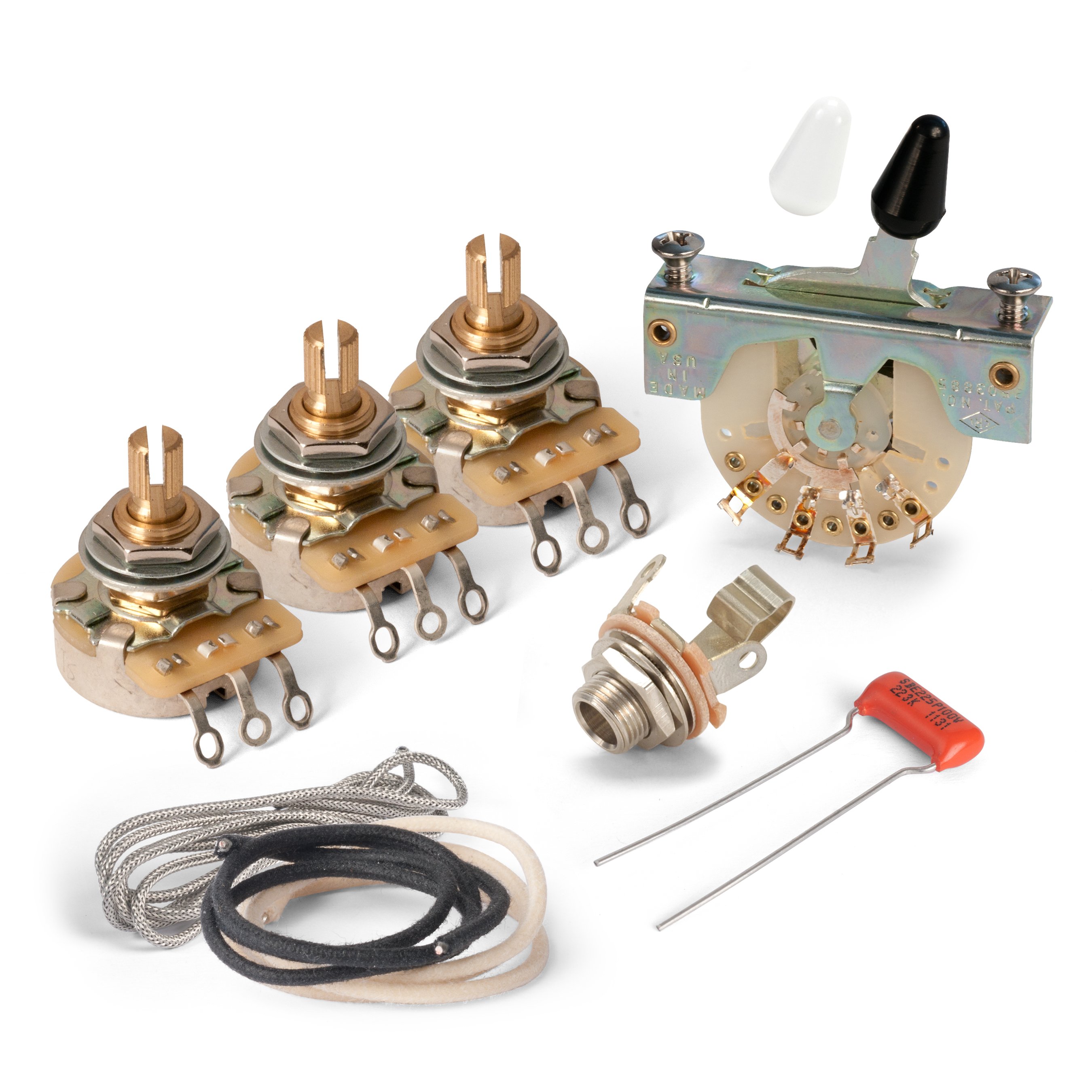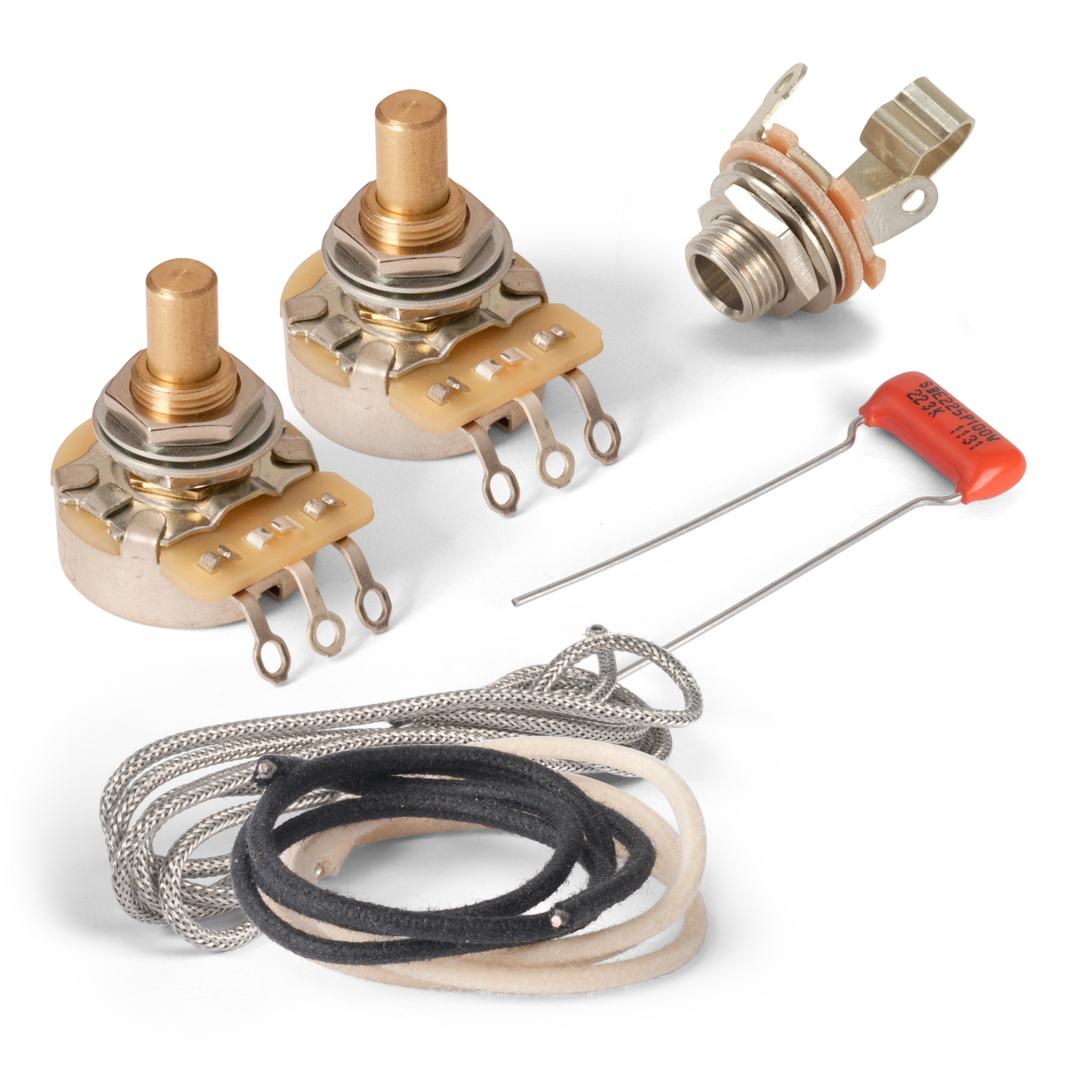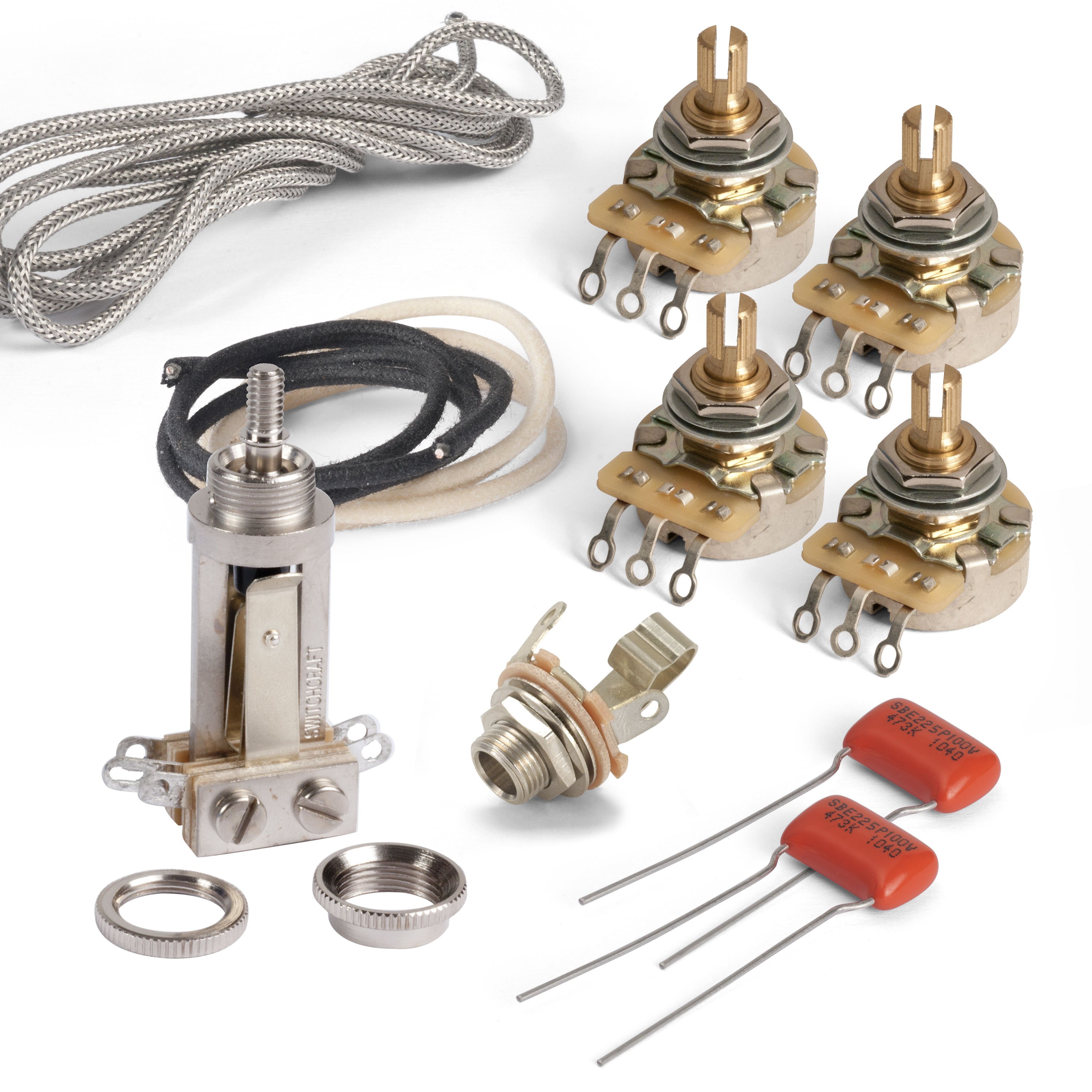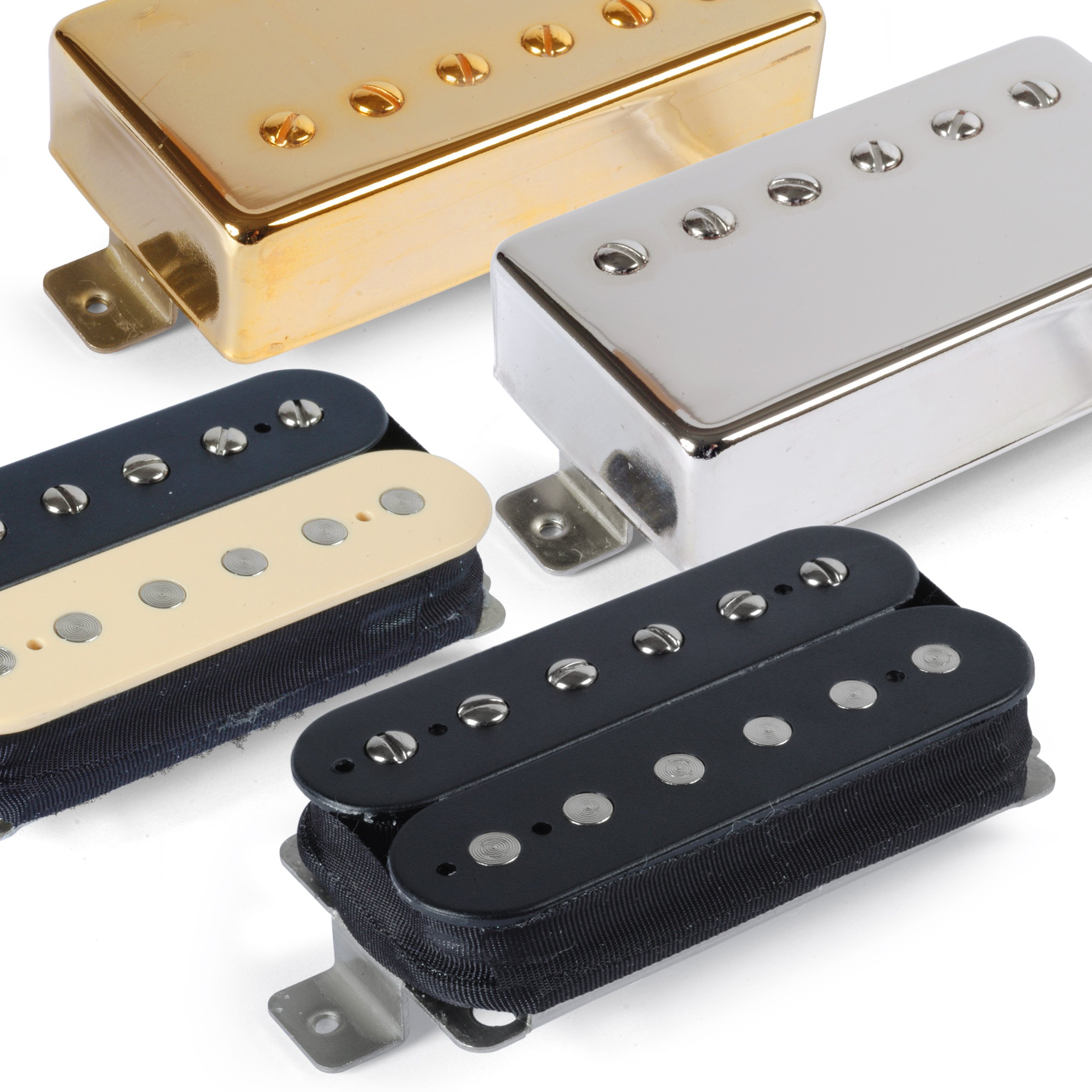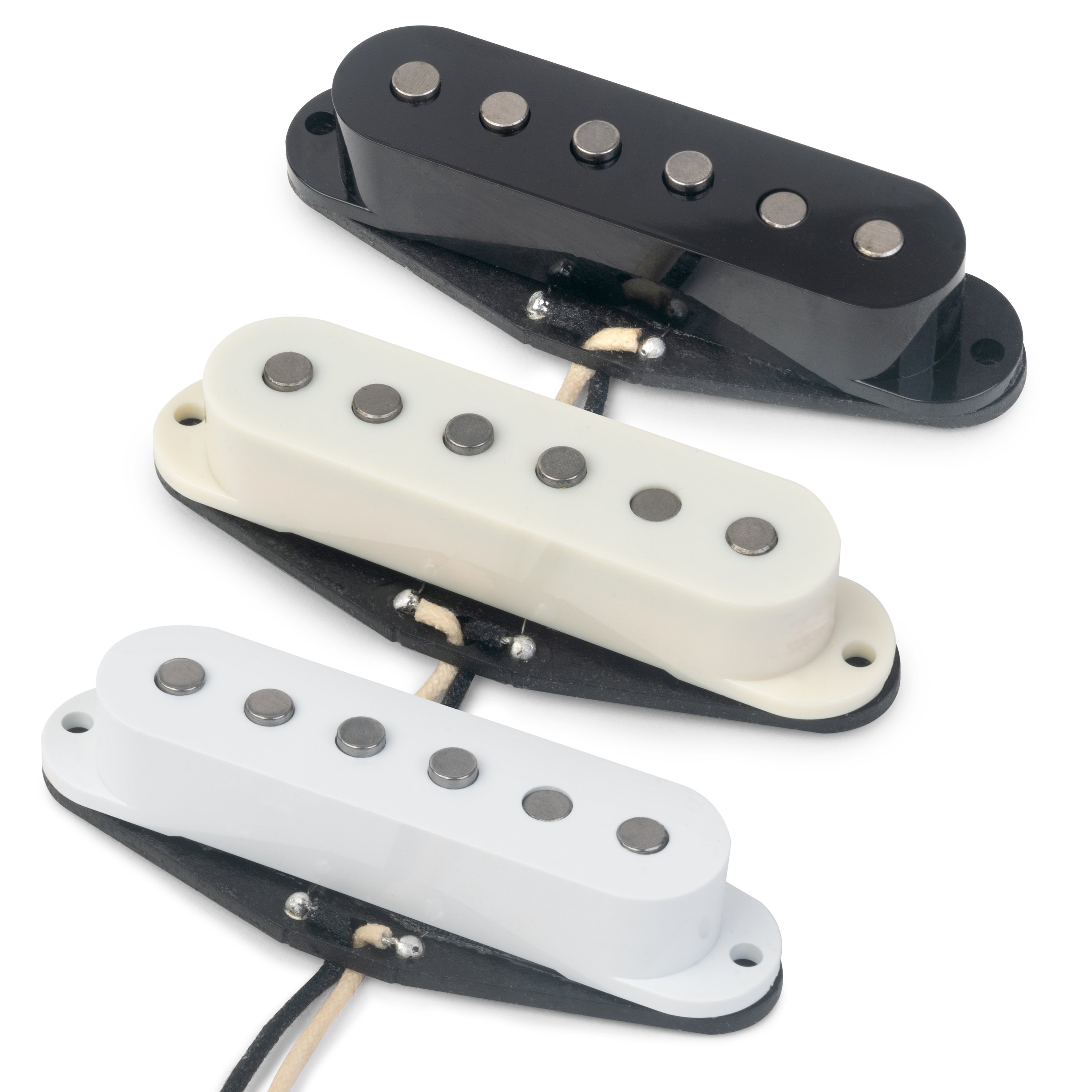How Does a Guitar Pickup Work?
A magnetic guitar pickup might look like a small, simple part sitting under your strings, but it’s one of the most critical components in shaping your guitar’s tone. If you've ever wondered how a pickup turns vibration into sound—or why two guitars with similar setups sound wildly different—this guide will take you deeper than the basics.
Most pickup explanations stop at “coil and magnet = sound.” We’ll look at how pickups generate signal, why different designs sound the way they do, and how subtle variations can dramatically affect performance.
What a Pickup Actually Does
A magnetic pickup is a type of transducer, meaning it converts physical movement into electrical energy. Here’s what’s happening every time you pluck a string:
- A magnet creates a steady magnetic field around the guitar strings
- When a string vibrates, it disturbs that magnetic field
- A coil of fine copper wire is wound around a bobbin/polepiece assembly. A magnet (bar magnet under steel polepieces or magnetized rod poles) magnetizes the strings; their motion changes the magnetic flux through the coil, inducing a voltage
- That disturbance becomes a small electrical signal, which travels to your amplifier
This is electromagnetic induction. For passive pickups, no batteries or active components are required—just movement and magnetism. Strings must be ferromagnetic (steel/nickel-steel). Bronze windings, most commonly found in acoustic guitar strings, alone aren’t sensed; the steel core is. In the case of acoustic guitar magnetic pickups, however, bronze wound strings have a steel core that can be read.
The Anatomy of a Magnetic Pickup
Most magnetic pickups have three main components: the magnets, the coil, and the bobbin.
- Magnets are typically made from AlNiCo (aluminum, nickel, cobalt) or ceramic materials. AlNiCo produces a warmer, more vintage tone, while ceramic offers higher output and a sharper, more aggressive character.
- Coil wire is made of extremely thin, insulated copper—usually 42 or 43 gauge—wound thousands of times around the bobbin. The number of turns and how the coil is wound play a huge role in tone.
- The bobbin sets coil geometry, which—together with polepieces, baseplates, and covers—affects inductance/capacitance and the resonant peak. That makes a real (if subtle) difference in treble and attack
Coil Winding and Tone
How the coil is wound has a major effect on the pickup’s response. Even microscopic changes in the spacing, angle, or tension of the wind can change how a pickup sounds.
Here’s how winding variations influence tone:
- More windings result in stronger output, thicker mids, and less treble
- Fewer windings offer lower output but a brighter, more open tone
- Scatterwound coils (intentionally irregular hand-winding) often produce a more complex, vintage character
- Uniform machine winding yields a narrower, more predictable resonant peak, often perceived as smoother; the ‘compressed’ feel is a byproduct of the shifted resonance and losses, not compression circuitry
This is one reason why two seemingly identical pickups from different brands may sound noticeably different.
The Differences Between Single-Coils and Humbuckers
Single-coil pickus use one coil (magnetized either by rod magnets or by a bar magnet + steel polepieces). They’re known for their bright, clear tone and fast attack, but they’re also prone to electromagnetic interference, especially 60-cycle hum from lights or electronics.
Humbucker pickups use two coils with opposite magnetic polarity and reverse winding, typically wired in series, canceling hum while keeping string signal in phase (see Diagram #1 below). This cancels out external noise while preserving the signal from your strings. As a result, humbuckers have:
- A thicker, warmer sound
- Higher output
- Greater resistance to hum and interference
They’re ideal for high-gain tones or noisier performance environments with excessive signal interference.
Magnet Types and Their Impact
Magnet material and configuration also shape your sound. Here are some common types and their tonal traits:
- AlNiCo II: Smooth, round highs and a vintage feel
- AlNiCo III: Lowest pull, softer attack, sweet highs (common in Tele neck variants)
- AlNiCo V: Tighter low end, stronger output, more clarity
- Ceramic: Powerful and aggressive, often found in modern rock and metal pickups
Pickup height also matters. Raising increases output/attack but can cause magnetic pull artifacts (‘Stratitis’ on single-coils) and reduced sustain. Set height while fretting the last fret and back off until warble disappears. Finding the right distance is part of a proper setup.
Pickup Position and Tonal Shaping
Where the pickup is mounted on the body affects tone dramatically.
- A bridge pickup sits near the string's anchor point and picks up sharp, bright tones with less bass
- A neck pickup captures more string movement and produces a warmer, rounder sound
- A middle pickup, common in Strat-style guitars, offers a balance, and bridge+middle or neck+middle (parallel) partially cancel specific harmonics, creating the characteristic ‘in-between’ quack
Switching between positions or blending pickups is one of the easiest ways to shape your tone mid-performance.
The Role of 4-Conductor Wiring
Most traditional humbuckers come as 2-conductor (hot plus braided/shield ground). 4-conductor versions expose each coil’s start/finish for flexible options. Each coil has its own start and finish wire, which opens up wiring options like:
- Coil split: shunts one humbucker coil to ground to mimic a single-coil sound (not the same as a coil tap)
- Coil tap: an extra lead from partway through a single coil’s wind to access fewer turns/lower output—different from splitting a humbucker.
- Series wiring: gives full humbucker output
- Parallel wiring: brighter, cleaner tone with lower output
- Out-of-phase wiring: nasal, thin tone. Most practical between two pickups; doing it within one humbucker is extremely low-output and very thin
With push-pull pots or toggle switches, you can access multiple tones from one pickup—great for versatile setups.
Magnetic Polarity and Phase Matching
If you’re mixing pickups from different manufacturers or wiring custom configurations, match magnetic polarity (N/S) and electrical phase. Verify with a magnet polarity tester and a multimeter so combined positions keep full bass and volume. Failing to do so can cause:
- Thin or hollow tone in dual-pickup positions
- Unintentional out-of-phase effects
- Loss of bass response or volume
Always check magnet orientation and wiring phase when building or modifying your pickup system. Use the chart below to help determine what the phase relationship will be between two coils. This chart assumes the typical parallel connection—the connection you get with a selector switch.
Why Pickup Design Affects Feel—Not Just Sound
Pickups affect feel via inductance, magnet pull, and where the resonant peak lands. Pot value (250 k vs 500 k) and cable capacitance also load the pickup, shifting brightness/attack. High-output ceramic pickups might feel faster and more compressed, while low-output vintage-style coils often respond more dynamically to picking nuance.
This responsiveness affects the playing feel, attack, and articulation. It’s one reason tone is deeply personal: the same pickup can inspire two players in completely different ways.
Final Thoughts on Guitar Pickups
Understanding guitar pickups gives you a powerful edge—whether you're choosing new gear, modding your guitar, or just chasing better tone. Every component, from the magnet type to the number of windings, plays a role in the sound that ends up in your amp.
This knowledge isn’t just academic. It helps you troubleshoot noise, find the right pickup for your style, and unlock tonal possibilities already hidden in your instrument. Pickups may be simple devices, but once you understand them, your control over your tone becomes anything but passive.
Closing tip: Chasing clarity? Lower pickup height a quarter-turn at a time (with the last fret held), then re-balance by ear.
